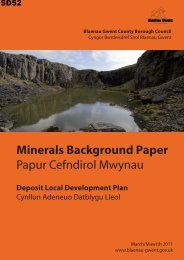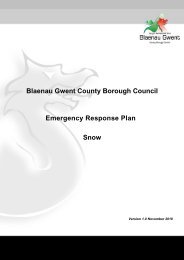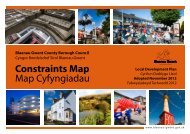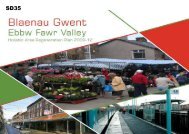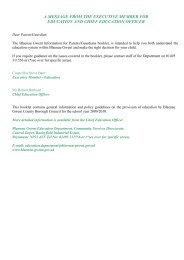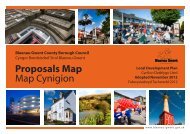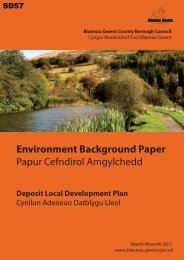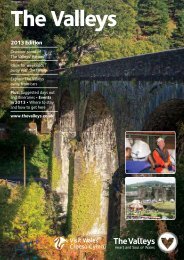Planning Policy Wales - Brecon Beacons National Park
Planning Policy Wales - Brecon Beacons National Park
Planning Policy Wales - Brecon Beacons National Park
You also want an ePaper? Increase the reach of your titles
YUMPU automatically turns print PDFs into web optimized ePapers that Google loves.
• promote the development of under-used and vacant previously developed land and premises,<br />
especially those adjacent to existing or disused railway lines or docks, which have been<br />
safeguarded by local planning authorities (see 8.5.4) indicating the industrial and commercial<br />
uses that would be acceptable;<br />
• provide criteria against which new buildings within farm complexes must be judged;<br />
• include a policy or policies relating to the location of establishments where hazardous substances<br />
are used or stored and to the development of land within the vicinity of establishments where<br />
hazardous substances are present 12 ;<br />
• indicate general locations where further hazardous development may be acceptable, subject<br />
to adequate design and acceptable risk assessment, and set out criteria to control hazardous<br />
development and other development in the vicinity; and<br />
• propose specific locations for those necessary industries which are detrimental to amenity and<br />
may be a source of pollution.<br />
7.5.2 Local planning authorities should also consider producing Supplementary <strong>Planning</strong> Guidance<br />
on how farm diversification proposals are addressed in their area and the criteria that planning<br />
applications for farm diversification would be expected to meet.<br />
7.6 Development control and the economy<br />
7.6.1 In determining planning applications for industrial and commercial uses, local planning<br />
authorities should have regard to:<br />
• the impact of the development on the environment and local amenity (in terms of, for example,<br />
its scale and design, use of materials and natural resources, impact on landscape and wildlife,<br />
and its contribution to the generation of traffic and waste, noise and odour, emissions to air,<br />
water and soil, and its impacts on community safety and health);<br />
• ways to avoid, mitigate or compensate for negative environmental impacts, including the impacts<br />
of climate change;<br />
• accessibility by a range of different transport modes;<br />
• the possible need for, and scale of, transport and other infrastructure changes required to enable<br />
development to occur;<br />
• proximity to, and compatibility (in terms of nature and scale) with, residential areas;<br />
• compatibility with existing industrial and commercial activities;<br />
• whether the intensification of industrial / commercial use is appropriate; and<br />
• opportunities to encourage developments involving co-location deploying waste stream<br />
technology or practices, innovative business or technology clusters, sustainable energy and<br />
developments in the social economy.<br />
105<br />
<strong>Planning</strong> <strong>Policy</strong> <strong>Wales</strong> Edition 3 - July 2010 - Chapter 7 Supporting the Economy


